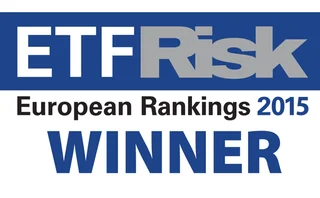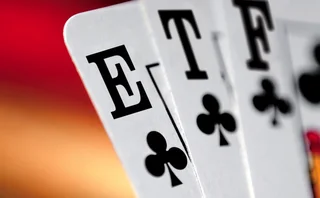
Regulators review short-selling restrictions
Regulators from across the globe continue to review and adjust short-selling restrictions.
In the UK, the Financial Services Authority (FSA) today extended disclosure requirements for short positions. The FSA's ban on short selling expired on January 16, but the regulator maintained a rule demanding daily disclosure of net short positions in excess of 0.25% of ordinary share capital, and increases of 0.1% thereafter. The FSA is currently consulting on proposals to increase this threshold to 0.5%, with short sellers having to disclose these positions to the market.
"Keeping the disclosure requirements will continue to enhance transparency and limit the potential for market abuse, while details of a long-term regime for short selling are being drawn up," wrote Sally Dewar, managing director of wholesale and markets at the FSA in London, in a statement published online today.
On May 29, Germany's BaFin extended restrictions on naked short selling of 11 financial stocks until January 31, 2010.
On May 28, Belgium's Commission Bancaire, Financières et des Assurances (CBFA) extended its ban on naked short selling of financial stocks until September 21.
In the US, the Securities and Exchange Commission (SEC) is currently examining other methods for restricting short selling. On April 8, it released a 297-page document for market comment, proposing different ways to prevent abusive short selling.
First, the SEC proposed reintroducing a version of the uptick rule, which would mean a stock could only be sold short if the price of the last trade on the stock was higher than the price on the preceding trade. Either the uptick rule could be reinstated in its former version, where a short-sale price test is based on the last sale price or tick, or as a modified uptick rule, where the short-sale price test would be based on the national best bid (the best available bid price quoted across all exchanges and market-makers).
Some market participants have warned against the introduction of such a rule as it would seriously impede dealers looking to put on genuine hedges. "The uptick rule makes it very hard to hedge as you'd have to sit and wait until there were upticks before you could actually get your hedges off. That would end up having big implications on liquidity and it would push prices wider," said one head of equity derivatives research at a US bank.
Others voiced concern over the cost of implementing new technology systems to comply with the rules. Analysts predict it could take more than a year to put the necessary systems in place, while the SEC estimates Wall Street would have to pay more than $100 million in legal fees alone to implement such a rule.
"Unfortunately it will be the securities firms that really get hit with that bill. A lot of the firms on the sell-side I've talked to are upset about it. Their staff is already cut back, they're losing money, they need stock volume, and securities lending is one of the ways they make money," said an official at a New York-based investment management firm.
Analysts were also concerned by the lack of exemptions for genuine hedging activities in the uptick and modified uptick rule. "It is absolutely critical that there be proper exemptions in place, otherwise you destroy the convertibles and the derivatives market-places," said Dan Mathisson, head of Credit Suisse's AES algorithmic trading platform in New York.
At an SEC roundtable on May 5, a number of market participants favoured the other type of restriction mooted by the SEC: the circuit-breaker. This entails imposing short-selling restrictions on individual securities once they decline by a predetermined amount (the SEC proposed a fall of 10%). Under the proposals, the circuit-breaker could take on three different forms: first, when a security declined 10%, it would be subject to a complete trading halt until the end of the day - with exemptions for derivatives and exchange-traded fund (ETF) market-makers; second, once the threshold is breached, the uptick rule would apply for that stock; or third, the modified uptick rule would be imposed once the threshold is breached.
Mathisson added that the first version of the circuit breaker would be preferable, in terms of cost, practicality and efficiency. "We're advocating the circuit breaker and trading halt complete with proper exemptions for derivatives dealers, convertible arbitrage players and ETF dealers. We think it is by far the easiest and cleanest to implement and, most importantly, it is the best solution to the perceived problem," he said.
See also: Australia lifts ban on short selling
SEC roundtable: circuit breakers most favoured short-selling rule
Only users who have a paid subscription or are part of a corporate subscription are able to print or copy content.
To access these options, along with all other subscription benefits, please contact info@risk.net or view our subscription options here: http://subscriptions.risk.net/subscribe
You are currently unable to print this content. Please contact info@risk.net to find out more.
You are currently unable to copy this content. Please contact info@risk.net to find out more.
Copyright Infopro Digital Limited. All rights reserved.
You may share this content using our article tools. Printing this content is for the sole use of the Authorised User (named subscriber), as outlined in our terms and conditions - https://www.infopro-insight.com/terms-conditions/insight-subscriptions/
If you would like to purchase additional rights please email info@risk.net
Copyright Infopro Digital Limited. All rights reserved.
You may share this content using our article tools. Copying this content is for the sole use of the Authorised User (named subscriber), as outlined in our terms and conditions - https://www.infopro-insight.com/terms-conditions/insight-subscriptions/
If you would like to purchase additional rights please email info@risk.net
More on Exchange-traded products
Realising the China opportunity
Webinar: HKEX
One size does not fit all: Smart beta explained
Sponsored feature: WisdomTree Europe
ETF Risk European Rankings 2015: ETF trading platform for institutional investors
Sponsored feature: Tradeweb
ETFs – Transforming the investment landscape in Asia
Sponsored survey analysis: Deutsche Asset & Wealth Management
Flood of oil ETF investors reshaping market, analysts say
'Massive' inflows cushioned oil price drop in early 2015, but could easily reverse
Currency-hedged ETF surge prompts hedging concerns
Eurozone QE programme prompts wave of investor interest
Currency-hedged ETF inflows boom
Investor interest sparks race to construct new products
Shanghai ETF option volatility spikes on China market fears
A crackdown on margin financing strengthens bearish sentiment
Most read
- Top 10 operational risks for 2024
- Japanese megabanks shun internal models as FRTB bites
- Market for ‘orphan’ hedges leaves some borrowers stranded







